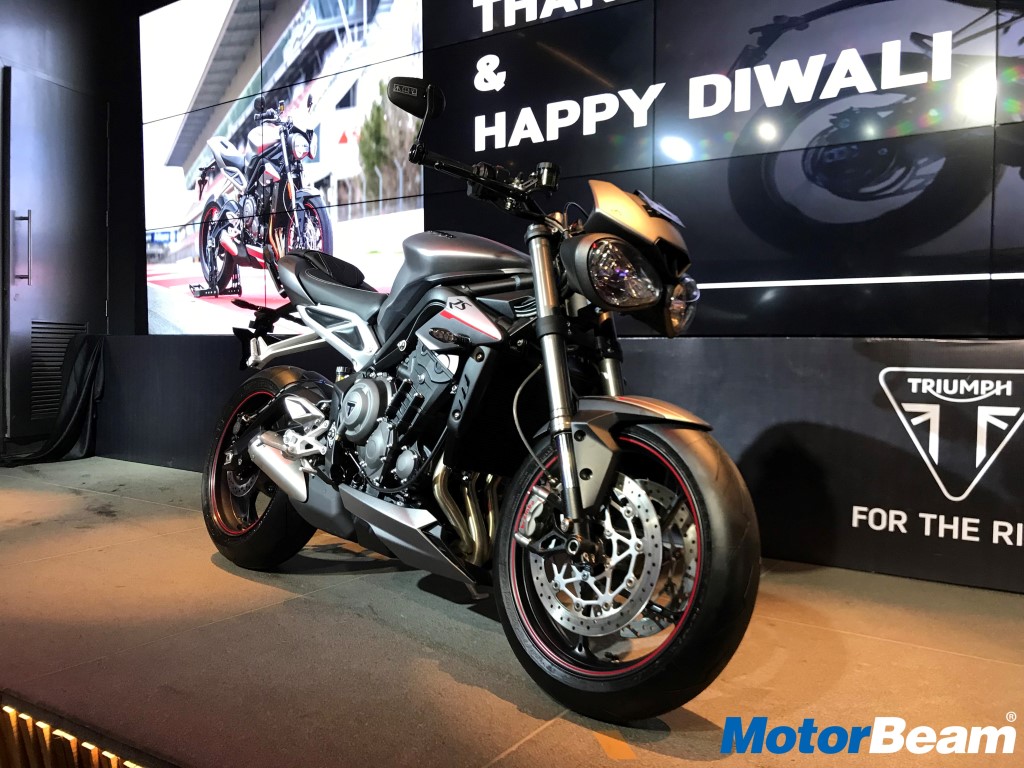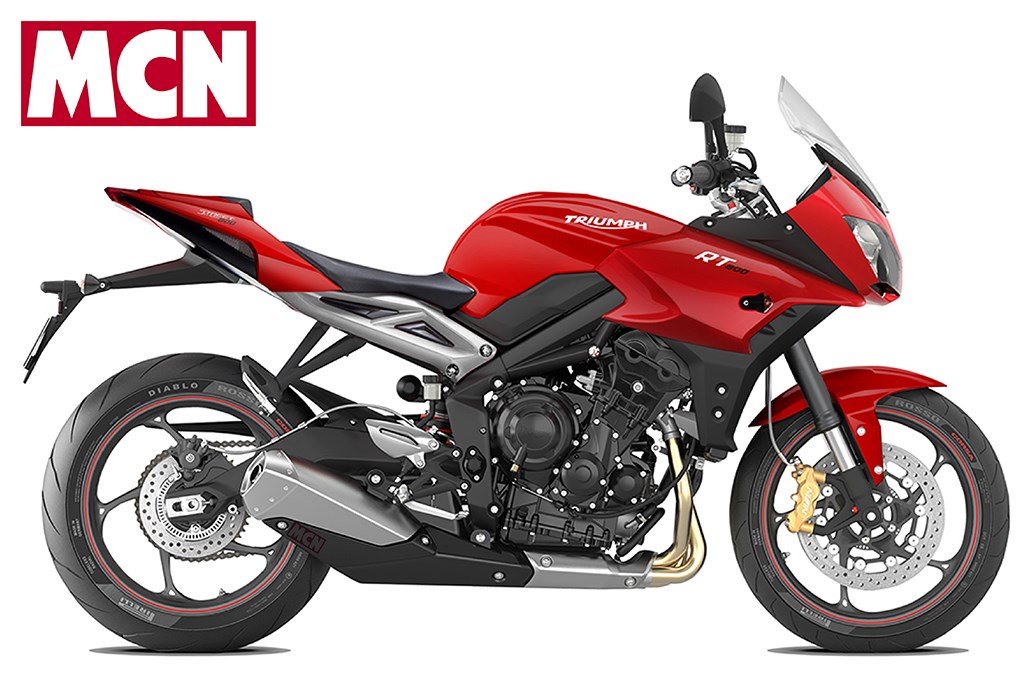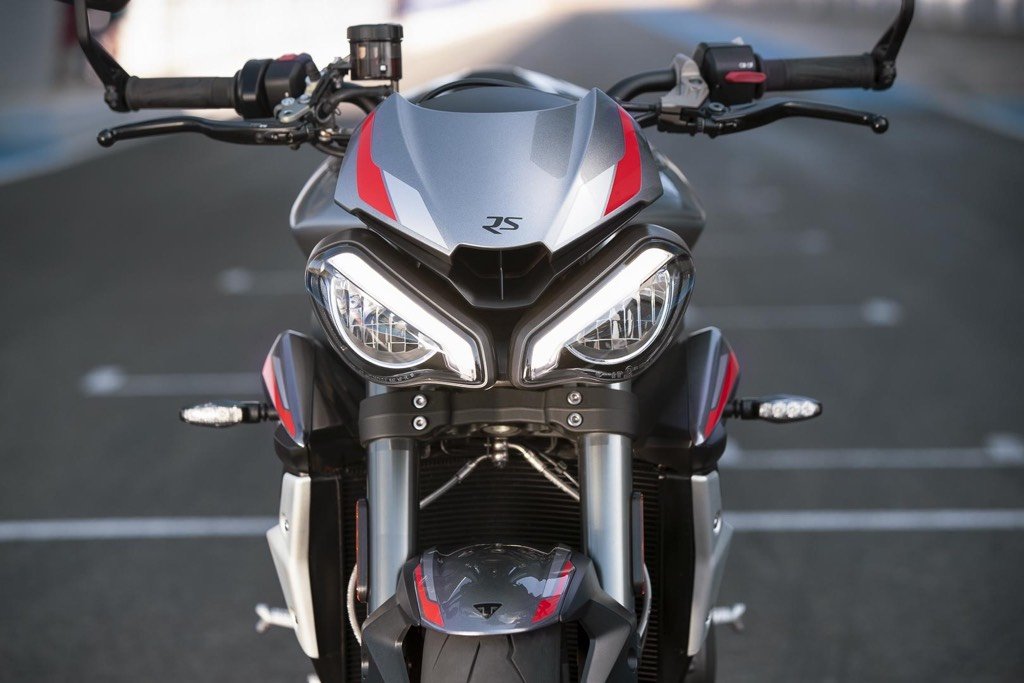The buttons are neatly laid out and easy to use
Instrument Cluster and Switchgear – Hop on the saddle and you’ll notice, there are quite a lot of buttons. Once you start playing around, you’ll notice it’s actually quite easy and something you’ll take a few minutes to get used to. On the right side of the handlebar, you’ll find the hazard light button. Under which you’ll find the engine kill switch button, that also works as the ignition button. Right at the bottom, you’ll find the home button (used to access the menu on the instrument cluster). The switchgear is of really good quality and the buttons don’t feel hard to press. On the left side of the handlebar, you’ll find the pass light switch which also works as the high beam switch. There is also a switch that lets you toggle between low beam or just having the DRLs on which is quite handy. It also has a Mode button that lets you choose between different riding modes on the go, under it, you will find the turn indicator switch which feels a little misplaced.
You could end up confusing the toggle switch for the indicator quite often
The switchgear looks complex at first but is extremely easy to use with LHS controls
Under the turn indicator switch, you’ll find the horn and the 5-way adjustable joystick that you use to toggle through the various menus and settings. In the beginning, I kept hitting the toggle button every time I wanted to hit the turn indicator. It’s a little annoying until you get used to it, after which it’s quite easy to use on the fly. Now coming to the instrument cluster which is of absolutely top-notch quality. It’s a 5.0-inch, full-colour adjustable TFT screen that displays almost all sorts of information. It also gets 2 themes and 3 styles per theme. These different styles and themes let you customize and personalize how you’d like your speedo and information to be displayed. I love the styles on offer and some of them look fantastic.
The 5-inch TFT screen flaunting one of the 6 different styles on offer
Part of the credit goes to the beautiful display that does an amazing job giving the rider a very vivid and clear speedometer. The auto high contrast display makes sure that visibility isn’t an issue under any lighting conditions. It switches to a white contrast backlight screen during the day and goes back to a black back-lit display under dark or dim lighting conditions. Personally, I love how the black back-lit display looks and how this screen delivers the best of both worlds. The instrument cluster has a tremendous amount of information at hand. The moment you turn the key, you’re welcomed with a Triumph logo emerging and it displays your odometer right from the getgo. It tells you everything like the ambient and engine temperature, fuel gauge, gear position indicator, 2 trip meters, average speed per trip, a lap timer, range and average fuel indicator.
The menus are easily laid out and quite hassle free to navigate through
Once you enter the main menu, you’ll find 7 options to choose from. Riding modes, that lets you choose and tailor all 5 different riding modes available, more on that later. Bike setup, that lets you set up options like the indicators, ABS, Traction Control and service updates. I love how this motorcycle lets you personalize your machine so much, all from the comfort of your seat and at the touch of a button. In case you’re wondering about glare and viewing angles of the display, don’t worry as you can tilt and adjust the screen till a certain degree to fit your needs, and it’s fairly hassle-free to do. Personally, I prefer an analogue speedometer because of how easy they are to read but the display on the Street Triple RS is making me sceptical of that preference. Everything on this TFT unit is extremely clear and a joy to look at.
The riding posture is kind off upright but still a little leaned forward
Ergonomics – Ergonomically I feel this is quite a comfortable machine. However the riding position on the RS is slightly more aggressive than that on the S, it’s not as dedicated as something like a Daytona 675R but comparatively a lot more dialled back. To sum it up, it’s basically aggressive enough for you to really dial into but still retains some of that comfort you’d expect from a street bike. The seat is slightly higher by 15 mm on the RS as compared to the S. The RS has plenty of legroom and the footpegs are positioned quite well. They allow comfortable manoeuvring while cornering, yet don’t feel cramped while regular street riding, more on that later. What does majorly hamper comfort is the amount of windblast you feel the moment you enter triple-digit speeds. The Street Triple RS doesn’t get any proper wind protection which is a major sour point on this bike, as it takes away some ease from the experience of riding this machine at higher speeds but thankfully it’s something an aftermarket windshield can fix.
Both tall and short riders shouldn’t have trouble getting comfortable
The riding posture although comfy, is a bit dedicated with forward biased ergos
The seat is made out of good quality leather and is well cushioned. The seat has plenty of room and is quite wide but once you get moving and pick up the pace, it doesn’t do the best job at holding you in place and lets you feel a little slippery on your seat. Triumph does give the Street Triple RS a rear seat cowl that should help hold you better in place, as this motorcycle propels you forward. Pillion comfort is quite decent however, I wouldn’t recommend long distances, as this isn’t that wide of a pillion seat and overtime could lead to fatigue. The mirrors offer a surprisingly great view and visibility is quite nice. However, once you twist the throttle, it does get blur due to the slight amount of vibrations you feel on the handlebar under hard acceleration. Speaking of which, the handgrips offer really tight grip and don’t feel slippery or uncomfortable even with the gloves on. The headlamps offer great illumination and the beam has a good throw.




